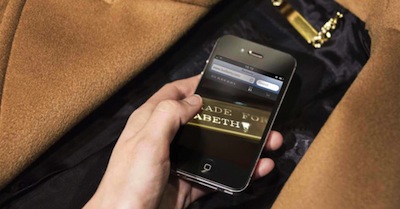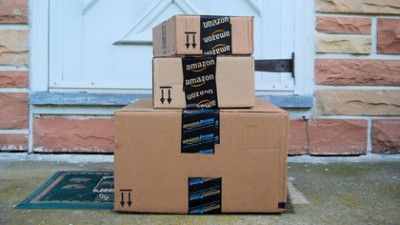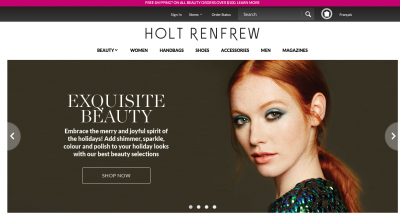 Mobile shopping is more common in higher-income households
Mobile shopping is more common in higher-income households
Amazon’s favorability among the affluent represents a long-term concern for luxury brands, according to a new report from the Shullman Research Center.
The online retailer still remains firmly outside of the luxury industry, as Amazon does not carry high-end brands, but its success nevertheless permeates all income classes. Brands need to prepare for the giant’s potential entry into the luxury space by beefing up digital purchase channels.
“[Amazon founder/CEO] Jeff Bezos had made it very clear, I believe, that he wants to be a major player in the luxury marketplace,” said Bob Shullman, founder/CEO of the Shullman Research Center. “He looks at his business as one with relatively fixed unit costs for each purchase one of his customers buys, so if he can effectively market luxury goods that sell for materially more than his mainstream goods, his gross margin per customer transaction will increase greatly.
“As such, he has started creating his own luxury/upscale fashion brands and he also set up his own high-end creative ‘agency’ in Brooklyn to create luxury style ads that now run in affluent magazines, newspapers and digitally,” he said. “What he really wants I believe is for one of the heritage luxury brands to allow Amazon to start selling some of their luxury goods besides sunglasses and other lower priced goods.”
Elephant in the room
“Segmenting Shoppers in an Evolving Omnichannel Marketplace” split consumer households into three income groups: Those that earn less than $75,000 per year, those that earn at least $250,000, and those between the two figures.
 Burberry mobile shopping
Survey data showed that those in the latter two brackets are equally likely to discover and research products online (82 percent, compared to 72 percent of those making under $75,000). However, those above the $250,000 threshold are more likely to use a mobile phone or a tablet than those between $75,000 and $250,000.
In terms of purchasing, the gap shrunk, though higher income correlated with higher rates of online purchase.
As income grows, consumption of luxury and premium brands’ goods increases, but this does not come at the loss of Amazon purchases, which remain fairly consistent across income levels. This indicates that luxury consumers, like all others, view Amazon as an ideal marketplace.
Indeed, the percentage of consumers who consider Amazon to be better than competitors is highest among those making at least $250,000. By contrast, only 1 percent rate it worse than competitors, despite the fact that that income level is significantly more likely to shop for luxury or premium goods.
This indicates that the service advantage that luxury retailers pride themselves on is not a point that differentiates from Amazon.
Burberry mobile shopping
Survey data showed that those in the latter two brackets are equally likely to discover and research products online (82 percent, compared to 72 percent of those making under $75,000). However, those above the $250,000 threshold are more likely to use a mobile phone or a tablet than those between $75,000 and $250,000.
In terms of purchasing, the gap shrunk, though higher income correlated with higher rates of online purchase.
As income grows, consumption of luxury and premium brands’ goods increases, but this does not come at the loss of Amazon purchases, which remain fairly consistent across income levels. This indicates that luxury consumers, like all others, view Amazon as an ideal marketplace.
Indeed, the percentage of consumers who consider Amazon to be better than competitors is highest among those making at least $250,000. By contrast, only 1 percent rate it worse than competitors, despite the fact that that income level is significantly more likely to shop for luxury or premium goods.
This indicates that the service advantage that luxury retailers pride themselves on is not a point that differentiates from Amazon.
 Amazon packages
At the moment, Amazon does not carry the products of heritage brands, but if that were to change, it could have a significant impact on the ecommerce landscape. The visibility and ease that consumers of all income levels associate with Amazon could result in a big initial sales boost and divert attention away from competitors. On the other hand, the long-term risks it poses to exclusivity and the degree to which it can detract from a branded ecommerce site are equally notable.
More immediately, however, Amazon’s convenience could be chasing consumers back downstream. Some consumers, especially those whose disposable income puts them on the border for luxury products, may opt for fashion brands and products Amazon does carry over luxury brands for the ease of access.
“To the extent that luxury brands want to compete with Amazon regarding their ‘real’ heritage luxury goods, and I am not sure they want to do so, they will need to offer the same or better shopping benefits compared to Amazon’s Prime service,” Mr. Shullman said.
“That includes two day or less days for free delivery of what was ordered and ‘easy’ returns as the consumer cannot try on what they buy as they can in a luxury brand's store,” he said. “If it doesn’t fit, there needs to be a 'no hassle' return approach, which has a cost attached to it.”
One-stop-shop
Monobrand retailers already have to compete with luxury department stores, as the “one-stop-shop” mentality has carried over from bricks-and-mortar to online.
Multi-brand retailers lead the luxury ecommerce market, representing four of the top five vendors in the space, according to a recent report by Technavio.
Amazon packages
At the moment, Amazon does not carry the products of heritage brands, but if that were to change, it could have a significant impact on the ecommerce landscape. The visibility and ease that consumers of all income levels associate with Amazon could result in a big initial sales boost and divert attention away from competitors. On the other hand, the long-term risks it poses to exclusivity and the degree to which it can detract from a branded ecommerce site are equally notable.
More immediately, however, Amazon’s convenience could be chasing consumers back downstream. Some consumers, especially those whose disposable income puts them on the border for luxury products, may opt for fashion brands and products Amazon does carry over luxury brands for the ease of access.
“To the extent that luxury brands want to compete with Amazon regarding their ‘real’ heritage luxury goods, and I am not sure they want to do so, they will need to offer the same or better shopping benefits compared to Amazon’s Prime service,” Mr. Shullman said.
“That includes two day or less days for free delivery of what was ordered and ‘easy’ returns as the consumer cannot try on what they buy as they can in a luxury brand's store,” he said. “If it doesn’t fit, there needs to be a 'no hassle' return approach, which has a cost attached to it.”
One-stop-shop
Monobrand retailers already have to compete with luxury department stores, as the “one-stop-shop” mentality has carried over from bricks-and-mortar to online.
Multi-brand retailers lead the luxury ecommerce market, representing four of the top five vendors in the space, according to a recent report by Technavio.
 Holt Renfrew ecommerce
When shopping online, the luxury consumer prefers to shop in a multi-brand environment, and this inclination is expected to drive growth of luxury ecommerce through 2019, according to “Global Luxury Etailing Market 2015-2019.” Online department stores have frequently been faster than single brands at adopting services such as free shipping and easy return policies, simplifying the ecommerce experience and making consumers more comfortable buying online (see story).
Moreover, with other countries turning into luxury hubs or experiencing explosions in middle class wealth, ecommerce needs to reach new consumers.
When looking beyond the U.S. borders, global heterogeneity presents many obstacles for brands looking to maximize their share through localization efforts, according to an L2 report published last September.
The share of ecommerce sales in the luxury industry has tripled since 2009 and is set to triple again by 2025, but obstacles such as currency, language, selection and payment method may make it difficult for brands to expand and capitalize on their reach. As social media, the Web, and the development of BRIC, Asian, and Sub-Saharan Africa in the future give brands more visibility, it is essential that they monetize global consumers (see story).
“Higher income people in my estimation are focused to ‘convenience,’” Mr. Shullman said. “What do exemplary brands offer to online shoppers, especially high income online shoppers?
“In my mind as one of them: convenience, reliability and a trusted source,” he said. “If one shops Amazon, it offers a very large selection of goods to review; a very easy to use site; speedy delivery; ‘easy’ returns when needed; and 'fair' pricing. Why go to a bricks-and-mortar store when you can get those benefits online?"
Holt Renfrew ecommerce
When shopping online, the luxury consumer prefers to shop in a multi-brand environment, and this inclination is expected to drive growth of luxury ecommerce through 2019, according to “Global Luxury Etailing Market 2015-2019.” Online department stores have frequently been faster than single brands at adopting services such as free shipping and easy return policies, simplifying the ecommerce experience and making consumers more comfortable buying online (see story).
Moreover, with other countries turning into luxury hubs or experiencing explosions in middle class wealth, ecommerce needs to reach new consumers.
When looking beyond the U.S. borders, global heterogeneity presents many obstacles for brands looking to maximize their share through localization efforts, according to an L2 report published last September.
The share of ecommerce sales in the luxury industry has tripled since 2009 and is set to triple again by 2025, but obstacles such as currency, language, selection and payment method may make it difficult for brands to expand and capitalize on their reach. As social media, the Web, and the development of BRIC, Asian, and Sub-Saharan Africa in the future give brands more visibility, it is essential that they monetize global consumers (see story).
“Higher income people in my estimation are focused to ‘convenience,’” Mr. Shullman said. “What do exemplary brands offer to online shoppers, especially high income online shoppers?
“In my mind as one of them: convenience, reliability and a trusted source,” he said. “If one shops Amazon, it offers a very large selection of goods to review; a very easy to use site; speedy delivery; ‘easy’ returns when needed; and 'fair' pricing. Why go to a bricks-and-mortar store when you can get those benefits online?"
